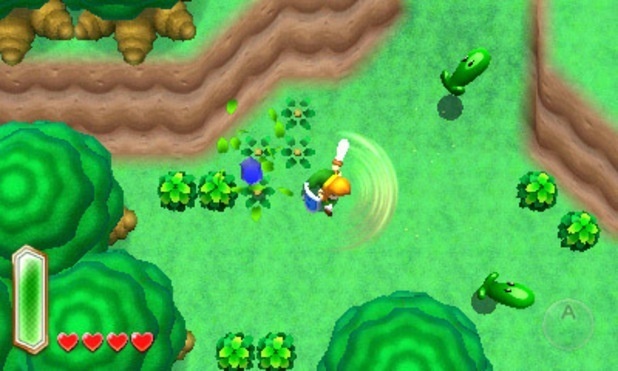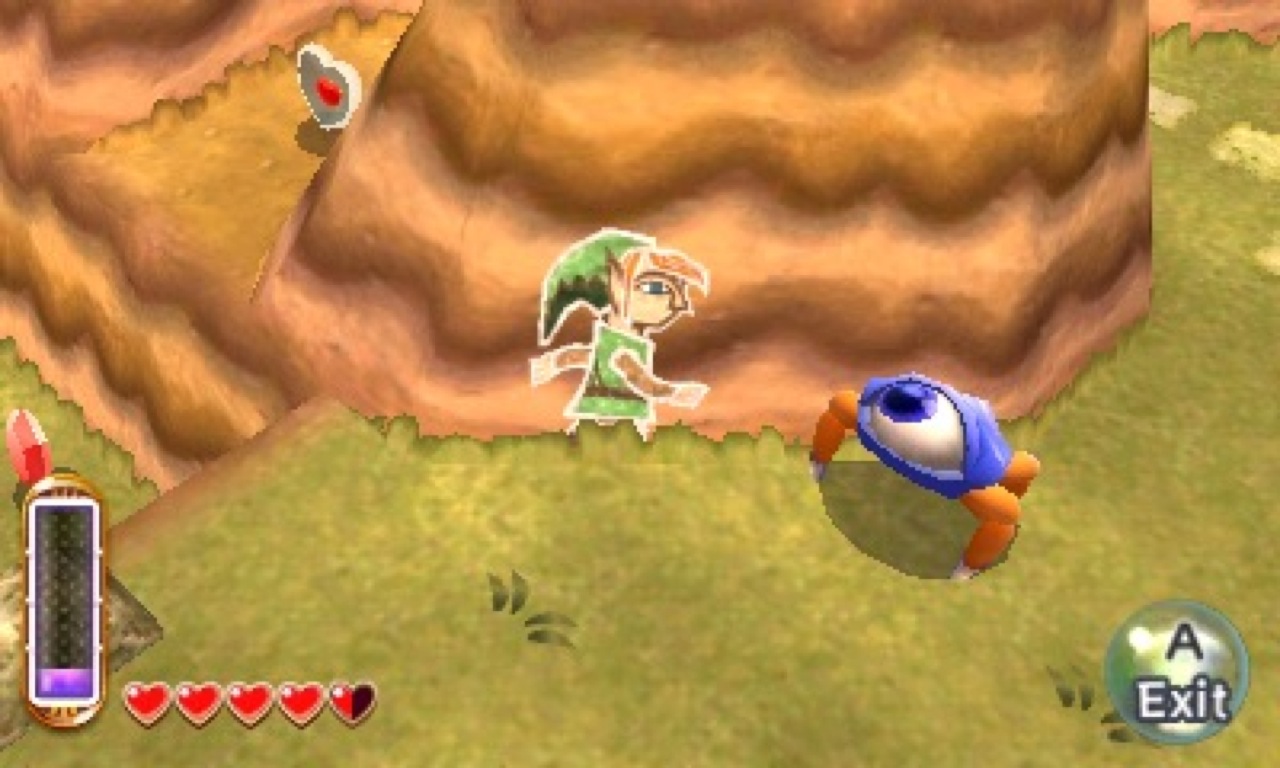Search
[{{{type}}}] {{{reason}}}
{{/data.error.root_cause}}{{{_source.title}}} {{#_source.showPrice}} {{{_source.displayPrice}}} {{/_source.showPrice}}
{{#_source.showLink}} {{/_source.showLink}} {{#_source.showDate}}{{{_source.displayDate}}}
{{/_source.showDate}}{{{_source.description}}}
{{#_source.additionalInfo}}{{#_source.additionalFields}} {{#title}} {{{label}}}: {{{title}}} {{/title}} {{/_source.additionalFields}}
{{/_source.additionalInfo}}- Details
- Category: 3DS
- By ChanBearBeast
- Hits: 7130
The Legend of Zelda: A Link Between Worlds (3DS)

The Legend of Zelda: A Link Between Worlds
Developed By: Nintendo
Publisher: Nintendo
Released: November 22, 2013
Available On: 3DS
Genre: Adventure
ESRB: E
Number of Players: 1 offline
Price: $39.99
The Legend of Zelda: A Link Between Worlds (ALBW) strikes a healthy balance between nostalgia and innovative gameplay in its 15-hour campaign. Having the same top-down perspective as A Link to the Past, ALBW shares its predecessor’s visual style while shaking up the gameplay at every turn. While I was not a fan of how they gave Link access to all of his weapons near the beginning of the game, I appreciated the new open-world feel. Those that love any of the other Zelda games and play ALBW will probably fall in love with the series all over again.
Gameplay in ALBW consists of exploring a large overworld to find dungeons and rescue sages, which is pretty typical for a Zelda game. The main difference here is that the dungeons can be conquered in any order (for the most part), allowing this game to have a much more nonlinear feel than others in the series. This is even more surprising given ALBW’s old-school, 2D-esque, top-down perspective. The price of this freedom is access to nearly all of Link’s arsenal at the beginning of the game. This is necessary because most dungeons require certain items to complete them. For example, one dungeon requires the use of the hookshot to pull levers and another needs the sand rod to create new walkways. While fun, most of the items are useful in one or two dungeons and then quickly forgotten. These items can be rented or bought. The rental price is pretty low, but you drop the item and lose it when you die. Despite this, I seldom died and was able to buy the items outright pretty early in the game. Side-quests are plentiful, but unrewarding. Usually rupees are the reward for dodging chickens or solving an extra puzzle room, but you have so many rupees to burn through anyway. Completionists will be especially annoyed by the fact that a certain reward is given only if you dodge the chickens for more than 999 seconds. I lasted about 50 seconds in this mode.

Strong Points: Open world; fun puzzles; interesting bosses
Weak Points: Finding treasure is usually boring
Moral Warnings: Some characters have mild cleavage, a character uses magic to summon a boss
The most innovative skill in Link’s repertoire is his new ability to merge into walls. This ability seems simple at first, but can be used in many areas and situations. Nearly any wall can be merged with and used as a clever pathway to a hidden heart piece. Some boss fights also use this mechanic to reveal the boss’ weak point. In the end, this mechanic really opens up the possibility for lateral thinking in a game with amazing puzzles. However, there are several missteps in the gameplay department. First, by giving Link access to most of his items early in the game, the developers took away much of the excitement of opening up big treasures in dungeons. Instead, many chests simply hold rupees (the game’s currency) or, at best, upgrades to current equipment. Second, puzzles rarely use more than one item to solve and never (as far as I know) use more than two. While this is somewhat understandable because only two items can be mapped to the face buttons on the 3DS without opening up your inventory, I feel like this was a missed opportunity. Despite these issues, the gameplay in ALBW remains its strongest selling point.
The story, while very similar to the plots of other Zelda games, has a few unexpected twists that are somewhat worth the wait. I’ve never been a big fan of Zelda plot lines, but that may just be me.
Graphically, the game looks great for the 3DS. The cartoony (but not quite Windwaker) visuals are fluid and fit the game’s world perfectly. The 3D effect was definitely on more than off in this game because it makes some of the puzzles easier to visualize due to the very vertical level design. Some characters are really strange looking, but I suppose that is Zelda’s style. Finally, some of the water and fire effects looked really nice on the 3DS’s screen.

Higher is better
(10/10 is perfect)
Game Score - 94%
Gameplay - 19/20
Graphics - 9/10
Sound - 9/10
Stability - 5/5
Controls - 5/5
Morality Score - 86%
Violence - 7.5/10
Language - 10/10
Sexual Content - 9/10
Occult/Supernatural - 6.5/10
Cultural/Moral/Ethical - 10/10
Sound design is great, but safe. Many of the tunes are classic Zelda tunes that are as catchy as they’ve ever been, but I can’t recall a single memorable new track. If you are a fan of classic Zelda music, you will really enjoy this soundtrack. If not, the music is not one of the selling points.
There is extremely minor questionable content in this game. Some characters have cleavage. The main antagonist is summoned in a demonic ritual (no pentagram or religious references). Magic is used by the main character. Enemies blink when hit and there is no blood in the game.
Despite the numerous flaws that I mentioned above, each of them felt extremely minor compared to all of the things ALBW does right. Giving all of the weapons to Link at the beginning felt relatively bad because the items were so interesting to use. Sidequests were fun to do even though the rewards were'nt worth it (about 100 rupees each). From its intricate and fulfilling puzzle design to its clever use of 3D effects, ALBW uses the 3DS to its full potential. Therefore, I would recommend this to most, if not all, 3DS owners.






